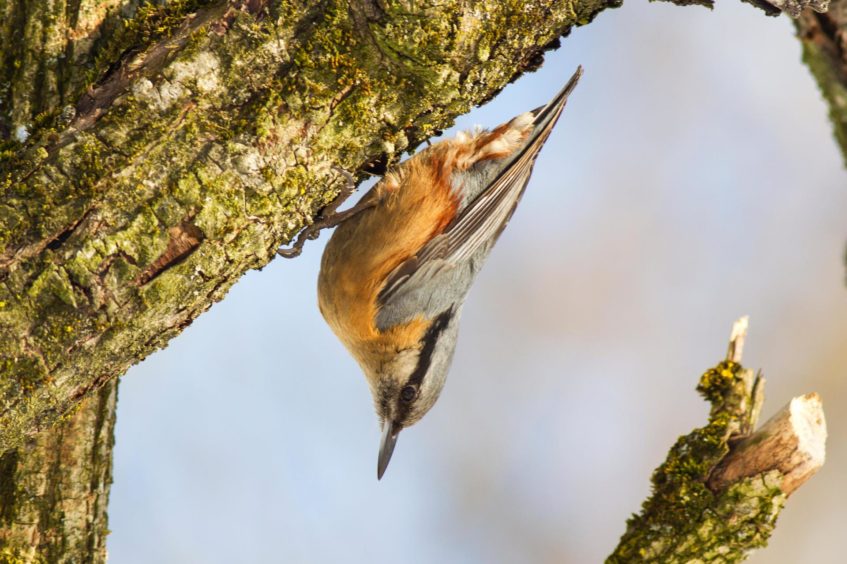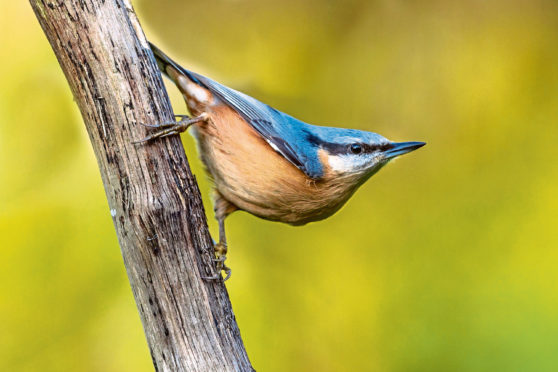It is a topsy-turvy world if you are a nuthatch, and that was certainly the case for this individual I had spotted in the garden, which scrutinised the garden bird feeder from its vantage point on a tree trunk, with head pointing downwards.
The nuthatch behaves in a similar manner to a woodpecker, but unlike a woodpecker it can crawl down a tree headfirst, its sharp grasping claws providing perfect grip and its long bill ideal for searching nooks and crannies in the bark for invertebrates. This unique way of scuttling over tree trunks and branches – upwards, downwards, backwards, and sideways – is something peculiar to nuthatches and is not found in any other British bird.
My garden-visiting nuthatch eyed-up the hanging feeder for a while longer, before swooping down to feast upon the sunflower seeds held within. Then, in a flash of blurry-grey wings, it was gone.
It is strange how quickly things change in nature, for nuthatches are relatively new colonisers to Scotland, having first moved into southern parts from England in the late 1980s, and then slowly moving northwards into more central areas of the country. In Courier Country, they are widespread in Fife, Dundee and southern Perthshire and are moving into Angus.
Climate change could be a reason for this range expansion, but I suspect it is more down to the profusion of bird feeders now in gardens, which helps to sustain the population.
It is the wonderful piercing song of the nuthatch that really grabs the attention; a liquid-flowing repertoire fit for any choir, featuring an incredible range of ringing notes, including one melody that is similar to a boy whistling. The poet John Clare described the song as a “long and loud continued noise” that “often stops the speed of men and boys”.

Thomas Coward, the renowned early 20th century ornithologist likened its notes to a toned-down version of the green woodpecker’s laughing call.
Indeed, if you hear a whistling song in spring and summer that is unlike any other bird call you have heard, the chances are it is a nuthatch. About the size of a plump sparrow, they are surprisingly hard to spot, and are much less confiding than other bird table visitors, such as tits and finches.
In the past, I tended not to replenish my bird feeders until November, usually leaving them empty over the previous few months, given that there is plenty of natural food about in summer and early autumn. However, this year, I started putting out food from the end of August, and the garden has been abuzz with birdlife ever since, particularly young blue, great and coal tits.
I have taken to sitting in a garden chair adjacent to my feeders, and within a short time, birds’ have become accustomed to my near presence. Even the shy nuthatch tolerates me, although if I move my body in the slightest, it quickly takes flight and won’t return for a while.
Info
As well as invertebrates, the nuthatch is fond of nuts and seeds, which it often fixes into a crevice in the bark and hammers away until it extracts the kernel.
